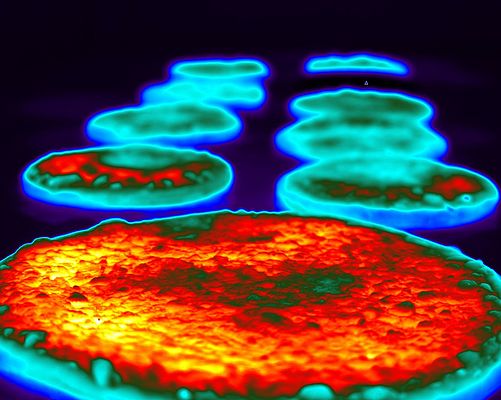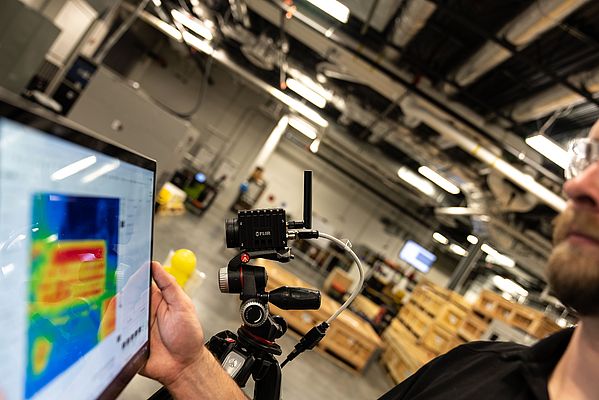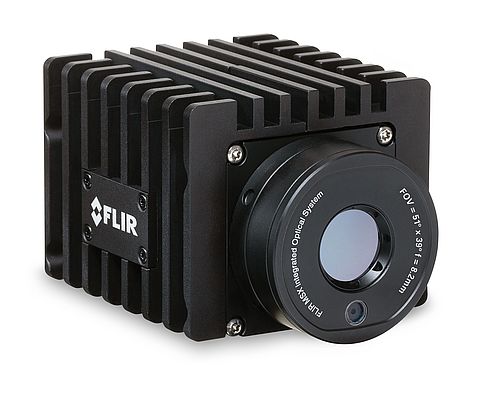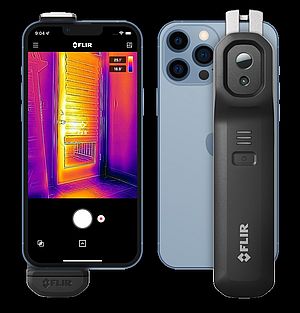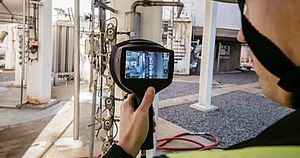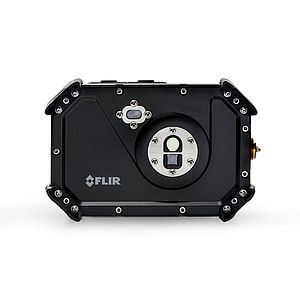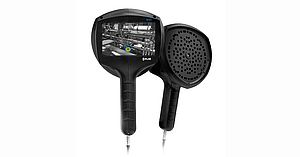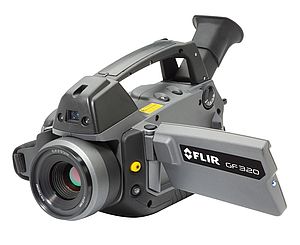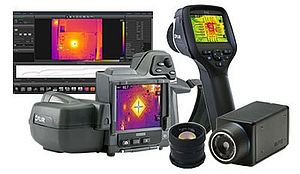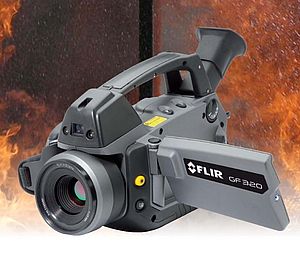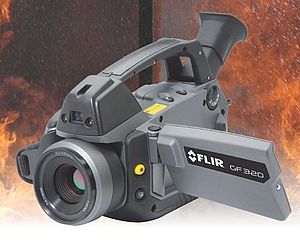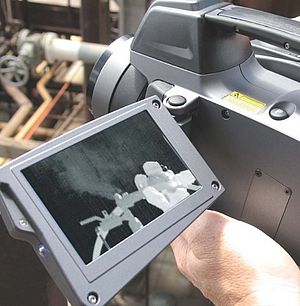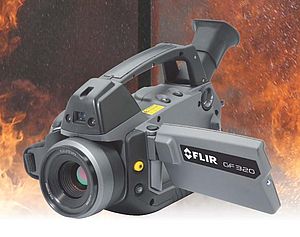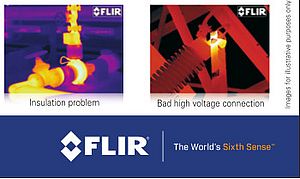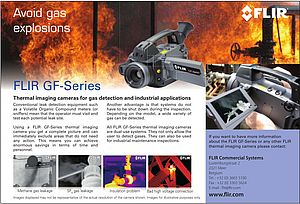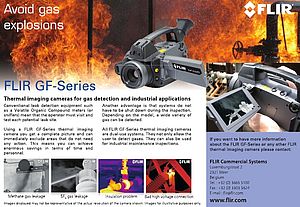Thermal imaging cameras are such a tool. Using thermal imaging cameras, you can make automated non-contact temperature measurements in many food processing applications. Analog video outputs can be viewed on video monitors, and digital temperature data, including MPEG4 video outputs, can be routed to a computer via Ethernet.
HOW IT WORKS
The main elements doing non-contact temperature measurements in the food processing industry are a thermal imaging camera and associated software. They act as “smart” non-contact sensors to perform 100% inspections, measuring the temperature of equipment, refrigerated products, and cooked foods as they exit the cooking process. Thermal imaging cameras are easy to use, small, and can be positioned almost anywhere as needed. They can also be used to inspect package sealing, and improve efficiency in other food processing operations. FLIR thermal imaging cameras have firmware and communication interfaces that enable their use in automated process control. Thirdparty software makes it easy to incorporate these tools into automated machine vision systems without the need for extensive custom-written control code.
The use of thermal imaging cameras in food processing is growing for applications such as:
- Oven baked goods • Microwave cooked meats
- Microwave drying of parboiled rice and other grains
- Inspecting ovens for proper temperature • Proper filling of frozen meal package compartments
- Checking integrity of cellophane seals over microwave meals
- Inspecting box flap glue of overwrap cartons
- Monitoring refrigerator and freezer compartments
THERMOGRAPHY FOR QUALITY ASSISTANCE AND PRODUCT SAFETY
Thermal imaging is first and foremost a quality assurance (QA) tool. Controlling the quality and safety of cooked meat products is an excellent use of this technology. A permanently mounted thermal imaging camera can record the temperature of, for example, chicken tenders as they exit a continuous conveyor oven. The objective is to make sure they are done enough but not over-cooked and dried out. Reduced moisture content also represents yield loss on a weight basis. Thermal imaging cameras can also be used for inspection on microwave precooking lines. Besides improving product quality and safety, overall throughput can be increased. An additional benefit is reduced energy costs. In addition to cooked food inspections, thermal imaging cameras can monitor conveyor ovens. They can even be part of a feedback loop to help control oven temperature.
PACKAGING INSPECTIONS
Software is available that allows thermal imaging cameras to locate objects and patterns in the images. One application for pattern matching is in the production of frozen meals. Thermal machine vision can use pattern recognition software to check for proper filling of food tray compartments.
A related application is automated 100% inspection of the heat-sealed cellophane cover over finished microwave meals. A thermal imaging camera can see heat radiating from the lip of the container where the cellophane heat-seal is formed. The temperature along the entire perimeter of the package can be checked by using the thermal image with machine vision software. This type of program matches the geometric pattern in the image and its temperatures against the temperatures in a pattern stored in a computer memory. An added function in such a system could be laser marking of a poorly sealed package so it can be removed at the inspection station.
Yet another application for thermal imaging cameras is monitoring container filling operations. Although this is seldom a product safety issue, it does affect yield and compliance with regulations. Different areas on the bottle can be defined and used to trigger an alarm and remove bottles that are over-or underfilled. Thermal imaging cameras are a better alternative to visible light cameras when a bottle or jar is made of dark colored glass or plastic.
AUTOMATING MEASUREMENTS
Application software currently available for thermal imaging cameras includes a wide variety of functions that support automated food processing applications. This software complements and works in conjunction with firmware built into thermal imaging cameras. The imaging tools and libraries in these packages are hardware- and language-independent, making it easy for food processing engineers to quickly implement thermal monitoring and control systems.
Thermal imaging cameras themselves provide the user with different operating modes that support correct temperature measurements under various conditions. Two functions commonly found in these cameras are a spotmeter and area measurements.
The spotmeter finds the temperature at a particular point. The area function isolates a selected area of an object or scene and usually provides the maximum, minimum, and average temperatures inside that area. The temperature measurement range typically is selectable by the user. As an adjunct to the temperature range selection, most cameras allow a user to set up a color scale or gray scale to optimize the camera image.
In conveyor oven applications, the area function is typically used because pieces of cooked product are often randomly located on the conveyor. The camera can be programmed to find and measure the minimum and maximum temperatures within the defined area. If one of those setpoint temperatures were to fall outside the user-defined limits, an application program running on a PC or PLC would instantly trigger an alarm, alerting the operator to check the thermal image on a video monitor or PC to find and remove the bad product, and/or adjust the cooking temperature.
In the case of local monitoring, an IR camera’s digital I/O can be used to directly trigger an alarm device without additional software. However, food processing often benefits from higher level analytics that are available in third-party software that runs on a PC. These out-of-the-box solutions do not require the writing of application source code. By adhering to commonly used machine vision interface standards such as GigE Vision® and GenICam™, a wide range of functionality is supported by this software.


